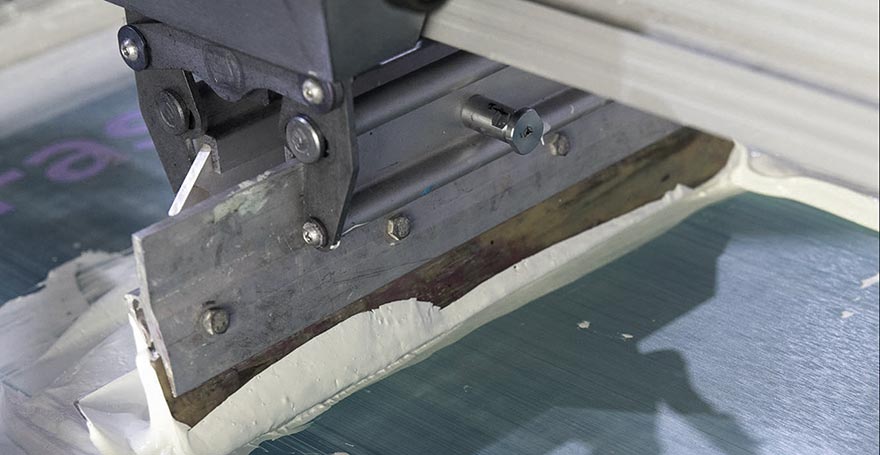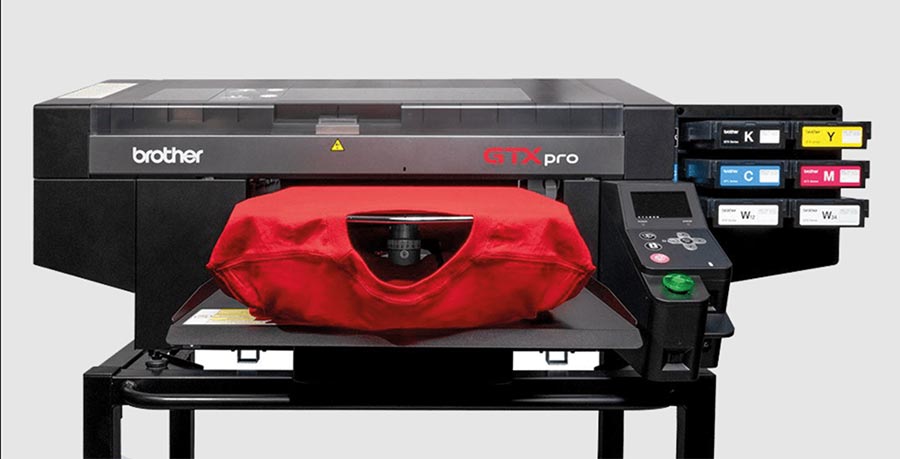When it comes to customising apparel and accessories, choosing the right printing method can significantly impact the quality and appeal of your merchandise. Two of the most popular techniques are screen printing and digital printing, each offering unique advantages and considerations. Whether you’re printing custom t-shirts, hoodies, or tote bags, understanding these methods will help you make an informed decision that aligns with your brand’s needs and goals.
Screen Printing: The Classic Choice

Technique Overview
Screen printing is a traditional method where ink is pressed through a stencilled mesh screen directly onto the fabric. Each colour in the design requires a separate screen, making it ideal for solid, vibrant designs with limited colour palettes.
Colour and Design Limitations
Screen printing excels in producing vivid, opaque colours that stand out against dark and light fabrics alike. However, it may not be the best choice for designs with intricate details or photographs due to its reliance on solid colour blocks. If your design features gradients or a wide spectrum of colours, digital printing might be more suitable.
Fabric Compatibility
Screen printing is compatible with a variety of fabrics, including cotton, polyester, and blends. The inks used in screen printing are generally more durable, making them ideal for items that require frequent washing, such as t-shirts and hoodies.
Cost Considerations
While the initial setup costs for screen printing are higher due to the need for creating individual screens for each colour, the method becomes cost-effective for larger quantities. Bulk orders significantly reduce the cost per item, making screen printing a popular choice for large events or wholesale orders.
Ideal Use Cases
Screen printing is perfect for designs with fewer colours, such as logos or text, where vividness and durability are prioritised. It’s also ideal for medium to large orders, where the economies of scale come into play.
Digital Printing: The Modern Contender

Technique Overview
Digital printing, also known as direct-to-garment (DTG) printing, uses inkjet technology to print ink directly onto the fabric. This method allows for high precision and detailed designs, as it can reproduce an almost limitless range of colours and gradients.
Colour and Design Flexibility
Digital printing shines in its ability to produce photorealistic designs with intricate details. Unlike screen printing, it doesn’t require separate screens for each colour, making it perfect for complex, multi-coloured designs without additional costs for extra colours.
Fabric Compatibility
While digital printing is most commonly used on 100% cotton fabrics, advances in technology have expanded its compatibility to include blends. However, it’s worth noting that digital prints may not be as durable as screen prints, and best practices in washing are recommended to maintain the print’s longevity.
Cost Considerations
Digital printing tends to have a higher cost per item compared to screen printing, especially for large orders. However, it offers a cost advantage for small batch orders or one-off custom pieces since it doesn’t require the setup involved in screen printing.
Ideal Use Cases
Digital printing is ideal for short-run orders or when you need full-colour, highly detailed designs. It’s perfect for custom gifts or merchandise with a dynamic colour palette or photograph-based art.
Choosing the Right Method for Your Merch
When deciding between screen printing and digital printing, consider the following factors:
- Order Size: For large orders with simple designs, screen printing can be more cost-effective. For small runs or detailed designs, digital printing may be preferable.
- Design Complexity: If you’re working with intricate artwork or require a range of colours and gradients, digital printing offers greater flexibility.
- Fabric Type: For items that will undergo regular washing, screen printing may offer better durability, especially on blended fabrics.
- Budget: Consider both your immediate budget and long-term goals, balancing setup costs against the desired look and feel of your merchandise.
By understanding these key differences, you can select the printing method that best supports your vision and ensures that your merchandise resonates with your audience. Whether you’re showcasing your logo on a t-shirt or creating vibrant tote bags, the right printing technique will elevate your brand and leave a lasting impression.